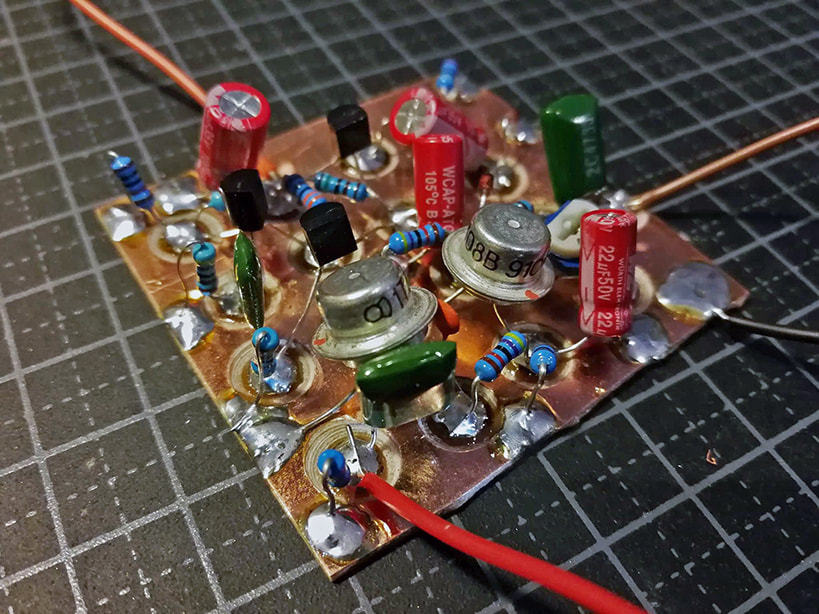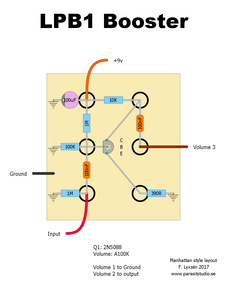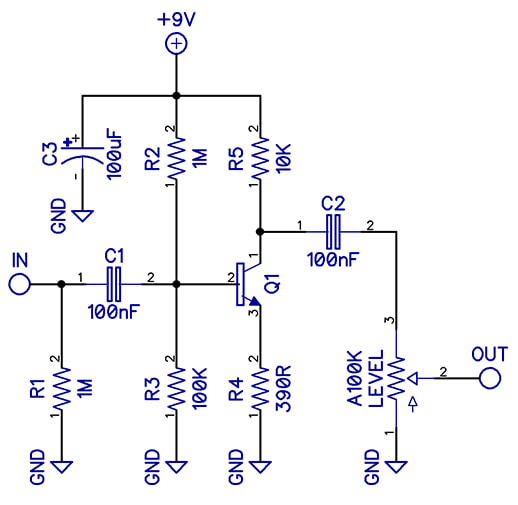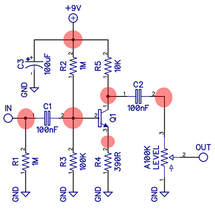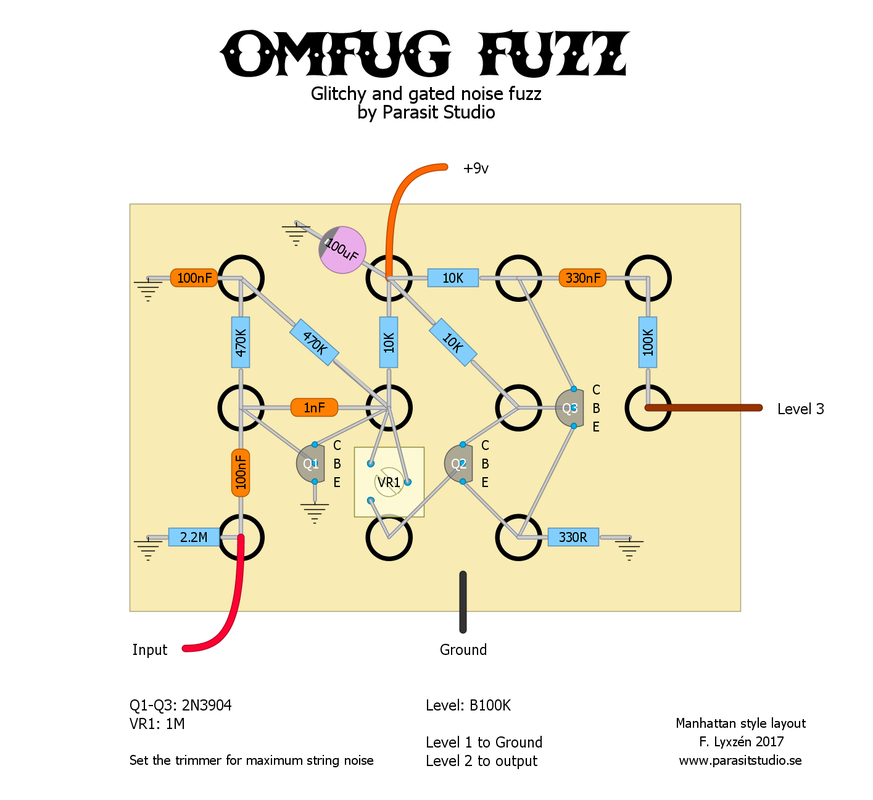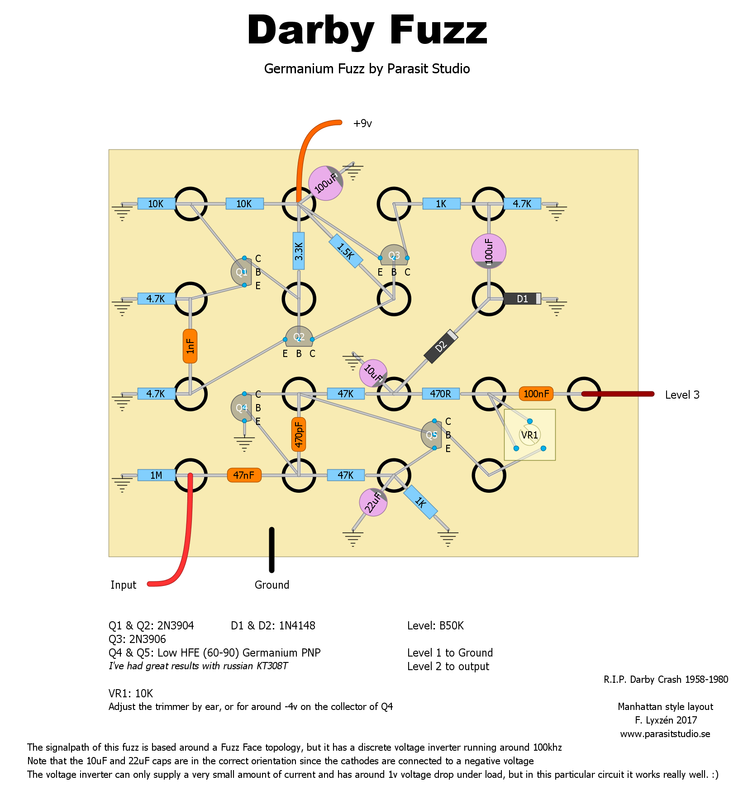Some people would probably not agree with the disadvantages I listed since I've seen people go crazy with complex build using IC chips and even SMD components on Manhattan style builds.
I try to keep the distance between the middle of the pads to around 8mm-13mm so that the components are tight together, but not too close that is becomes too fiddely to work with. After the pads are made I like to pre-solder all the pads - just fill them up with a decent amount of solder. Now the board is perpared and it's time to start soldering in the components. Cut the legs of the component alittle shorter (check the distance against the board) and bend the legs alittle to make small "feet". Reflow the solder of the pad and put the component in. Hold it and let it cool for a few seconds, then do the other side. As you go along there will often be several components connected to the same pad, and then it helps to apply some new solder to the pad when adding more components. I find that it's best to start in the upper left corner and work your way through the board from left to right.
As you can see in this example, the layout follows the schematic with a few minor changes (just to have the pads lined up nicely). I normally just use pen and paper to make the layouts, but I wanted it clean and easy to read for this presentation. Parasit Studio originalsI made two original designs specifically for Manhattan style of building. :)
CONCLUSIONEven through it might seem like a step backward, it's been really fun to make something different for a change. Expanding my bag of tricks, learning and challenging myself to come up with new stuff is what keeps this hobby fun and interesting for me. I haven't seen many pedalbuilder using this technique and I was inspiried to try it from a great HAM radio guy that I follow on youtube.
Check out his channel: https://www.youtube.com/user/w2aew/
7 Comments
Anders
11/6/2017 02:03:52 am
This is very cool. I think I'm going to try this since I also have loads of these soviet germaniums laying around. One question; whrere do you get those sweet red electrolyctics?
Reply
11/6/2017 01:13:50 pm
I got the red electrolytics from digikey. The brand is called Wurth. :) Just wanted to match my red Arcadiator PCB's. :P
Reply
Dear Sir/Madam:
Reply
Alina
9/17/2018 02:06:23 am
Hello friend,
Reply
Andreas
11/29/2021 09:30:21 pm
Yor link for the Drill bit is broken, just to let you know. Cheers, Andreas.
Reply
2/25/2023 11:52:56 pm
I really like your take on the issue. I now have a clear idea on what this matter is all about..
Reply
Leave a Reply. |
